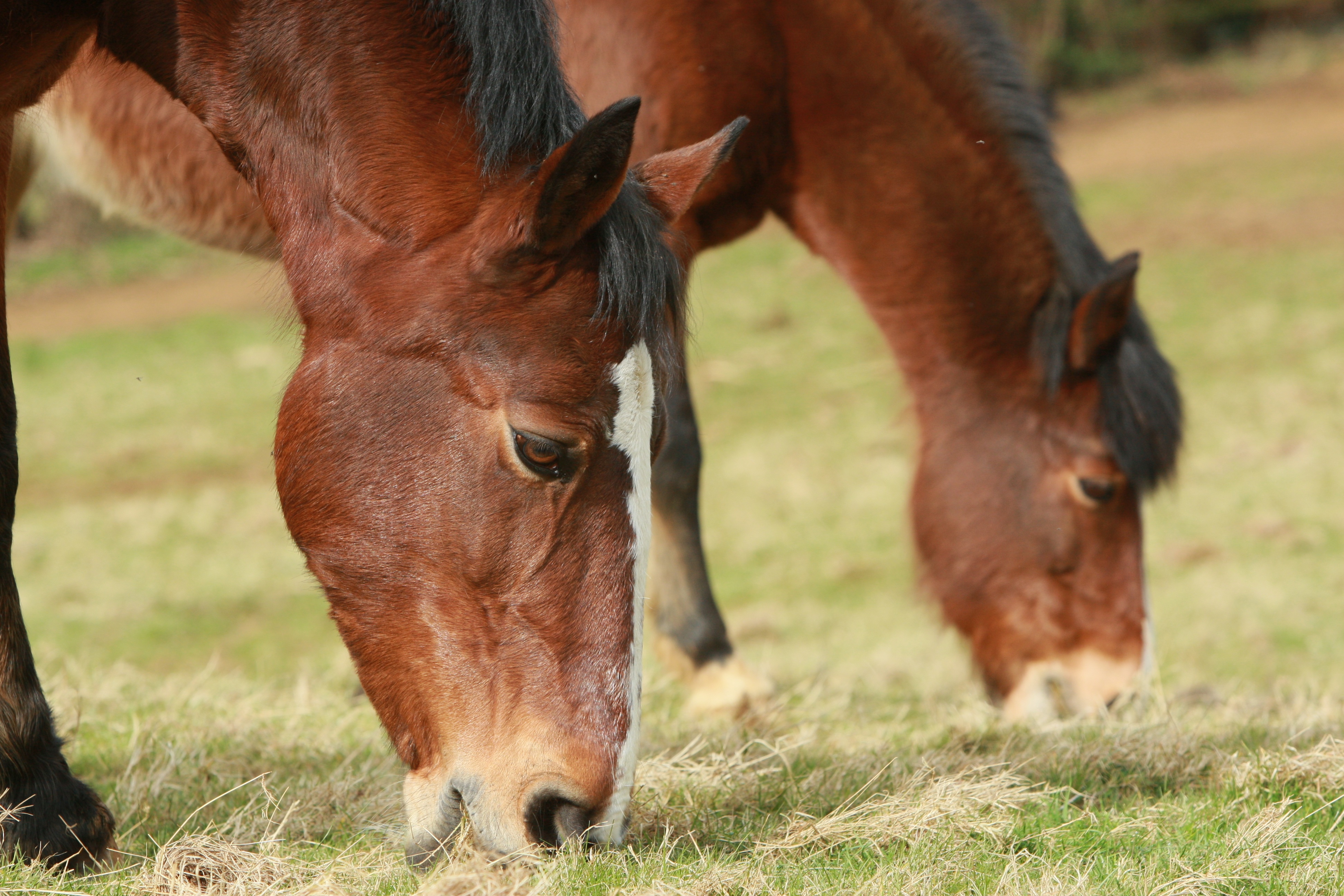Supporting a horse or pony with Equine Cushing’s disease (also known as Pituitary Pars Intermedia Dysfunction, PPID), can be incredibly difficult when it comes to feeding. Horses that suffer from Equine Cushing’s disease, are also more susceptible to becoming laminitic. With this in mind, it is extremely important to better understand how their nutrition can support their Cushing’s diagnosis.
Let’s start by looking at some of the signs of Equine Cushing’s disease:
- Changes in the coat including curls appearing, lack of shedding or delayed shedding of a winter coat
- Excessive water intake, and consequently increased urination
- Muscle wastage & lack of muscle tone (particularly around the back area)
- Abnormal fat deposits, particularly around the eyes
- General lethargy and poor condition, coat no longer shiny
Hormones & Equine Cushing’s Disease
Just as the phrase PPID indicates, Equine Cushing’s disease is linked to the pituitary glands, which play a vital role in regulating hormones. In horses with Cushing’s disease, the glands produce excessive Adrenocorticotropic Hormone (ACTH) which increases the production of cortisol. High levels of cortisol (a stress hormone) in the blood leads to increased levels of circulating blood glucose. Just like with diabetes in humans, insulin production is affected, and the horse can become insulin resistant.
Although nutrition plays a big part, managing the effects of Cushing’s disease is not done through nutrition alone. Whilst their diet is a contributing factor, medication sometimes needs to be used alongside a balanced diet. Veterinarians will often prescribe Prascend tablets, which contain the active ingredient pergolide. This prescribed medication mimics the action of dopamine, which therefore regulates the production of hormones by the pituitary gland.
Dietary Management of Equine Cushing’s Disease
Dietary changes made to any horse's ration, should be made very gradually, even more so for horses with Cushing’s disease, in order to help control the symptoms. Although the risk of laminitis may be reduced in horses being medically treated, it is worth noting that horses with Cushing’s disease struggle to maintain normal blood glucose levels due to insulin sensitivity. Taking this into consideration, searching for feeds that are low in starch and sugar, is a great place to start!
Feeds such as our Cushcare Condition (which has been scientifically formulated for those suffering from Cushing’s disease) can be a great option. With a high oil content, Cushcare Condition provides extra calories, supporting a healthy weight gain and condition, in a low starch, low sugar format. It also includes additional proteins in order to support muscle maintenance (loss of muscle mass is one of the main symptoms of Equine Cushing’s disease).
Cushcare also offers additional digestive, immune and hormonal support – all of which are ideal for an older Cushing’s horse. Additionally, it is a coarse crumble formulation, providing ease of chewing when fed dry, or it can be soaked and made into a mash, ideal for those with poor dentition (or those that just prefer a mash).
Forage and Grazing
Just like concentrate feeds, sugars and starches in forage also need to be managed with horses that suffer with Cushing’s. Forage and grazing can significantly vary in its nutritional content, and so suitable levels of starch and sugar are never guaranteed. Pasture often contains high levels of non-structural carbohydrates (NSCs) - sugars, starches and glucans.
Similarly to laminitic horses and ponies, those with horses that are suffering with Cushing’s need to be mindful of the seasonal changes in their forage and grazing. Some ways to combat this is by restricting turnout times and strip grazing. In some cases, owners stop grazing completely and instead provide them with sufficient hay in an alternative turnout pen. Having your forage and grazing analysed, is a great way to ensure they are suitable and gives you a more accurate understanding of what they are consuming each day. If their hay is of a high nutritive value, soaking in for 8-12 hours prior to feeding, is scientifically proven to reduce the NSC content, and is another great way of ensuring its suitability.
We hope this has helped to give you some insight into feeding a horse with Cushing’s disease. Our expert nutrition team are always on hand to give you tailored advice for your horses, so please feel free to call them on 01270 782 223, email them on helplineenquiries@dodsonandhorrell.com or message them via LiveChat or socials.



